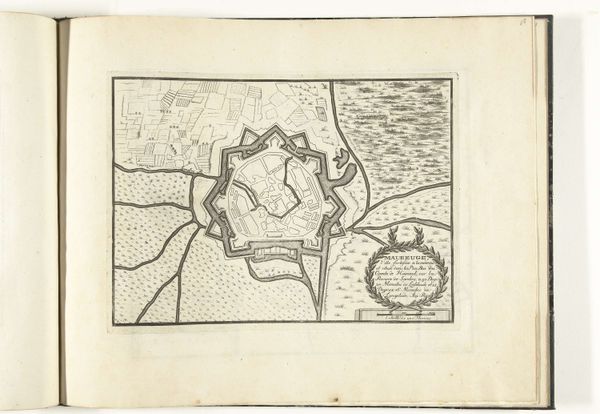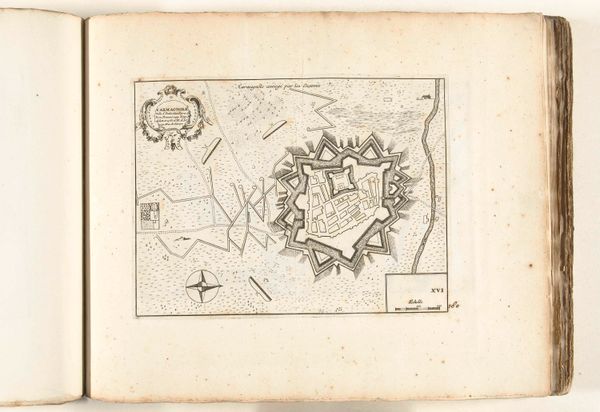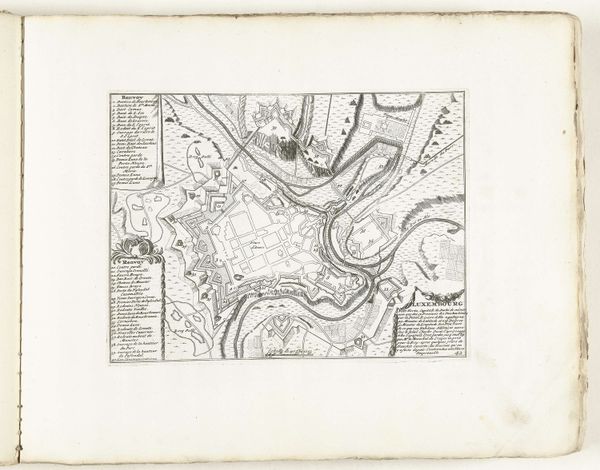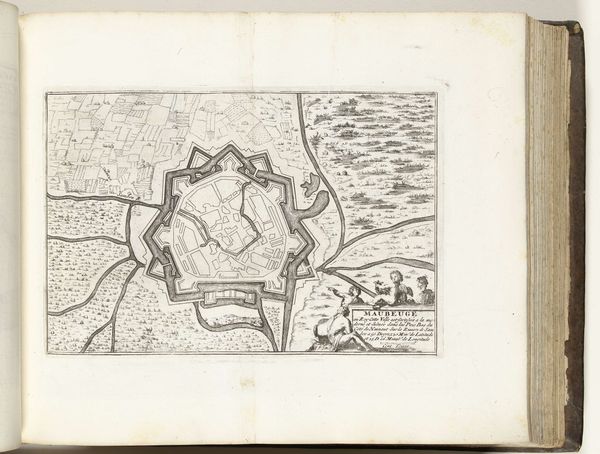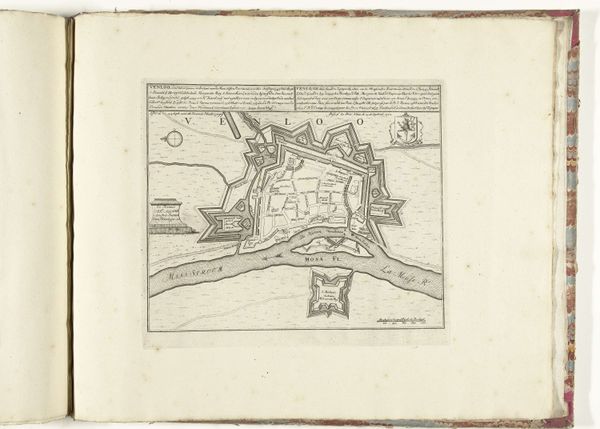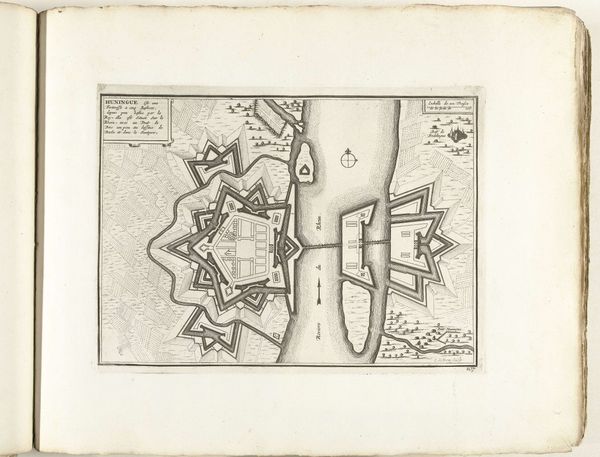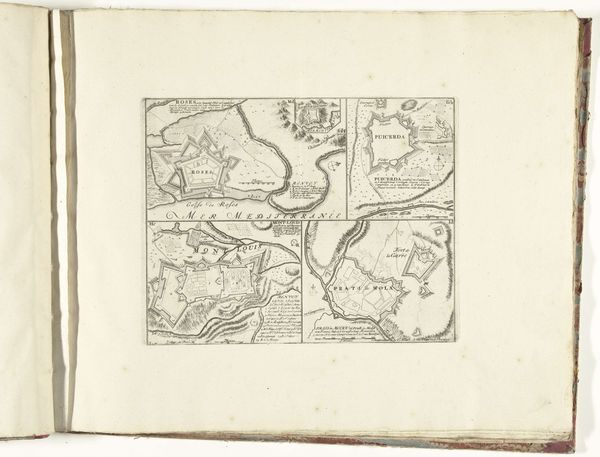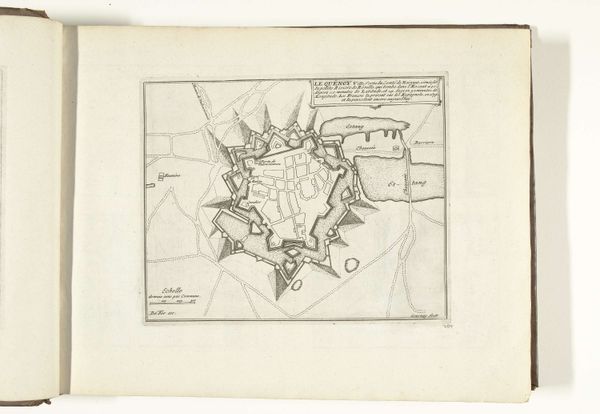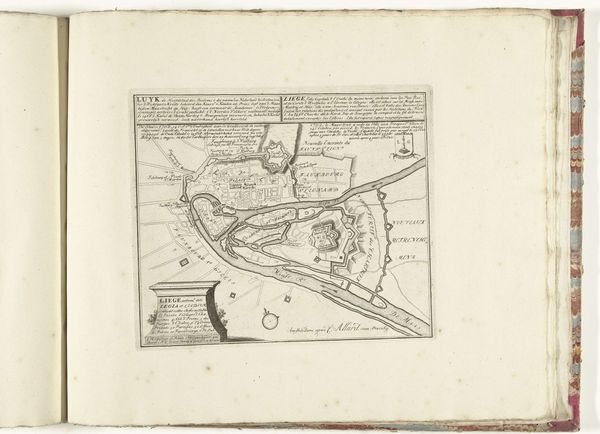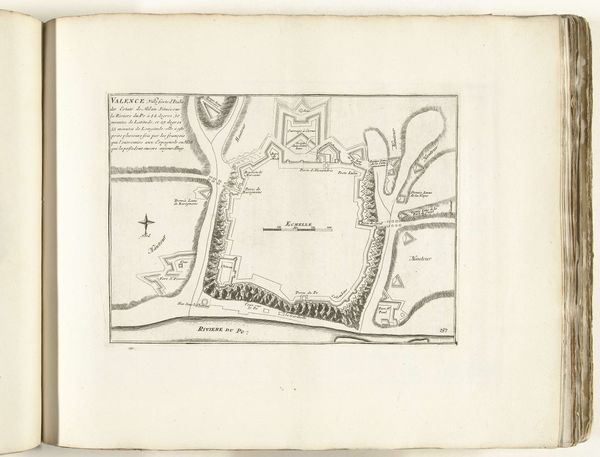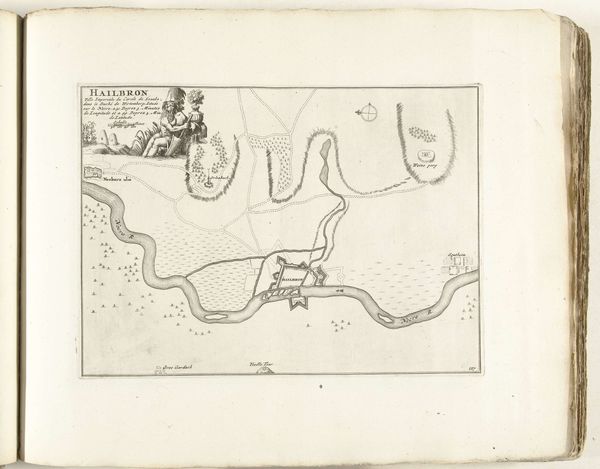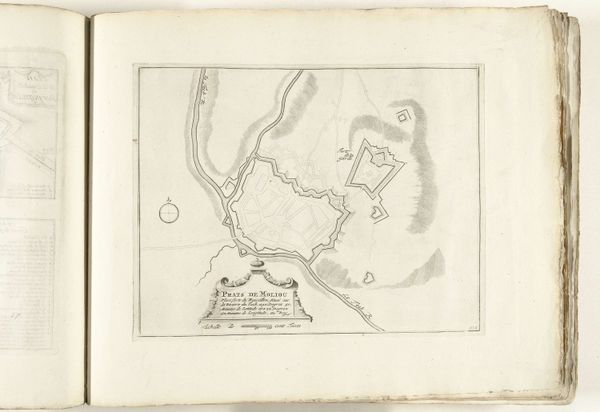
drawing, ink
#
drawing
#
baroque
#
pen sketch
#
ink
#
geometric
#
cityscape
Dimensions: height 208 mm, width 278 mm
Copyright: Rijks Museum: Open Domain
Curator: Up next, we have a work rendered anonymously around 1702-1703 entitled "Plattegrond van Schlettstadt." This cityscape rendering utilizes ink and drawing techniques. What are your initial impressions? Editor: It feels very…orderly, almost obsessively so. Like someone with a burning desire for control meticulously mapping out their domain. Makes you wonder what they were really afraid of. Curator: Indeed. The meticulous detail highlights the artist's emphasis on structure, notably through geometric forms. The city’s layout, surrounded by fortifications, adheres to Baroque principles prevalent during that era, showcasing precise lines and calculated spatial arrangements. The pen sketch technique further accentuates this ordered vision. Editor: The funny thing about order is, it often masks chaos. Look at the details—those almost scribbled-in bits of landscape outside the geometric perfection. It’s as if the wildness keeps peeking in, refusing to be completely tamed by all the straight lines and right angles. Makes me think of someone trying desperately to hold it all together. Curator: That interplay of chaos and order reflects a tension between the controlled urban space and the unpredictable natural world. Furthermore, the very choice of rendering a city plan suggests a deep concern with power, defense, and strategic urban design. The artist’s almost scientific precision elevates the practical to an artistic statement. Editor: Or maybe it’s just a really cool doodle? Seriously though, I see both that drive for control *and* the subversive acknowledgement that you can’t really control anything. Life, the mess of it all, seeps in, doesn't it? Even in a map. Curator: An astute observation. The artwork serves as a compelling record of historical urban planning and prompts reflection on the delicate balance between human ambition and natural forces. It allows us to investigate social structures through its artistic elements. Editor: Exactly! And for me, it's a good reminder that behind every seemingly rigid structure, there’s a whole lotta wobbly human stuff going on. Makes history feel less like facts and more like a very intricate, very human story.
Comments
No comments
Be the first to comment and join the conversation on the ultimate creative platform.
